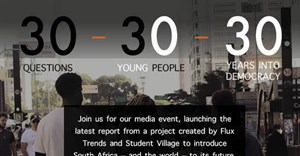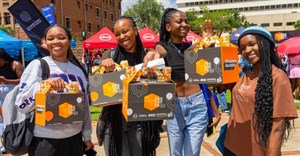Trending
Sneaker wars: Four ways to kick it with Afrillennials
Puma’s launch of Creepers by Rihanna sold out worldwide upon release, twice, while Adidas’ “Yeezy Boost” range by Kanye West also had a similar feat.

Almost too little too late, we saw the launch of Nike ID, but SA’s youth are still looking to various brands to get their sneaker fix. Whether you’re in the sneaker industry or not, Student Village picked out four key learnings from Nike’s challenge on maintaining your brand lead with the youth.
1. Never underestimate competition
Nike seems to be untouchable and it’s been said that no brand could topple their game. With that said, being in the lead leaves businesses at risk of being complacent and not seeing the signs on their road of success. Brands need to constantly know where they are, where they want to be and what the market is doing.
Students think it’s a good time to cheat on Nike with the amplitude of options being sent their way, ringing some alarm bells for the brand. Nike has done well at captivating the youth market with classic design and celebrity capsule collections but they have to catch up to the cutting-edge brands upcoming in their industry. The youth care more now about the new, fresh and cool rather than a traditional brand that may provide something they already know. Competitor brands are seemingly more and more aware of this and are pumping funds and resources to power themselves within the sneaker race.
2. Don’t get too comfortable
You can’t out-market a bad product the same way you can’t out-exercise a bad diet. In the sneaker business, fortunately, product always comes first. Students love variety and personalisation in order to tailor-make their lifestyle but Nike has placed a lot of focus on resurfacing old designs or repackaging, which created a gap with Afrillennials (African Millennials) who gravitate towards edgier brands with more exclusive offerings. Cleveland Cavaliers superstar LeBron James, who has a lifetime contract with Nike, also released a sneaker that didn’t resonate with young consumers despite high hopes.
Even though we found that approximately 60% of SA male students own Nike apparel, they’re always craving the latest designs and looking out for what the new kids on the block have on offer. Perhaps the customisable Nike ID range will stand the brand in good stead to give them a much needed boost.
3. Think Afrillennials, not brand
Do you know these students that you want to market to? Sticking to what you know, based on the stats derived from general market research, can put your brand well on its way to missing the mark with South African students.
Afrillennials think differently. They influence their parents, peers and other markets’ purchasing decisions. They are also the cohort that starts trends, sometimes right there on campus. For this reason it’s important to understand why they buy from Nike’s competitors. They’re buying from the other brands because of their hustle and the fact that they have brand personalities that youth can identify with personally. Reason being that brands aren’t aspirational to them anymore. It’s the lifestyle and influencers that brands associate with to shape an identity that does the attracting.
Using peer interactions to insert your brand into student lives is possibly the best tactic for ensuring you get some face time with this market. A brand that seems to know this well would be Adidas. When looking at their most recent social media influencer campaigns with stylists and bloggers like Siya Beyile, Lulama Wolf and Tony Gum, one can see the positive effects of a brand aligning themselves with the coolest and trendiest influencers on the scene.
4. Keep your options open
One of the stand-out findings we discovered in our recent Res Room Research Survey was that female students show very low levels of brand loyalty. With Nike being very male market focussed, endorsing predominantly male celebrities in the “sneaker-verse”, female students are being steered right into competitor arms. With female students making up a large percentage of the South African consumer market, one can immediately see how paying attention to their preferences may prove beneficial to a brand.
The gender dynamics within the sneaker game have seen huge changes in the past few years with brands releasing more Unisex products, while others creating specifically female empowerment associations, all doing their best to make sure their shoes fly off the shelves.
5. Stepping it up
With young rivals muscling in, Nike’s compromised market share holds some great lessons for other brands looking to gain and maintain a leading position. Keeping up with the fickle South African youth market however, is another ball game and requires a little more than the text book approach of throwing messaging at a faceless consumer cohort. The secret ingredients to a successful brand strategy is to keep innovating, target new markets, expand your offering, look after existing clients and also look to the future.
Source: Student Village
Student Village has carved its niche in youth insights and specialisation, youth research, graduate development and campus marketing. Reaching over a million students, you need to look no further than Student Village for the latest youth insights from what’s happening on the ground, to real issues that touch the youth of SA Student Village has over 15 years’ experience in understanding students as well as taking big brands to the youth market.
Go to: http://studentvillage.co.za/


















